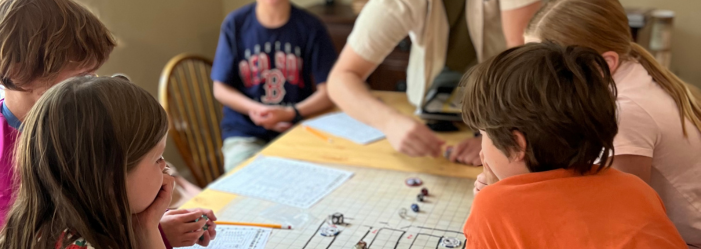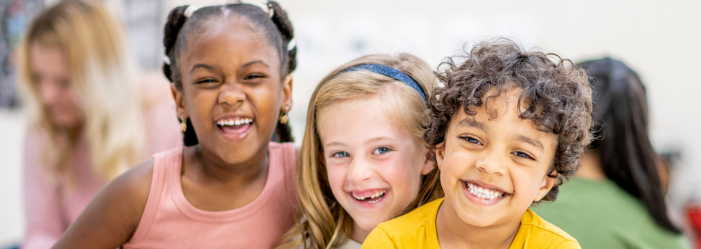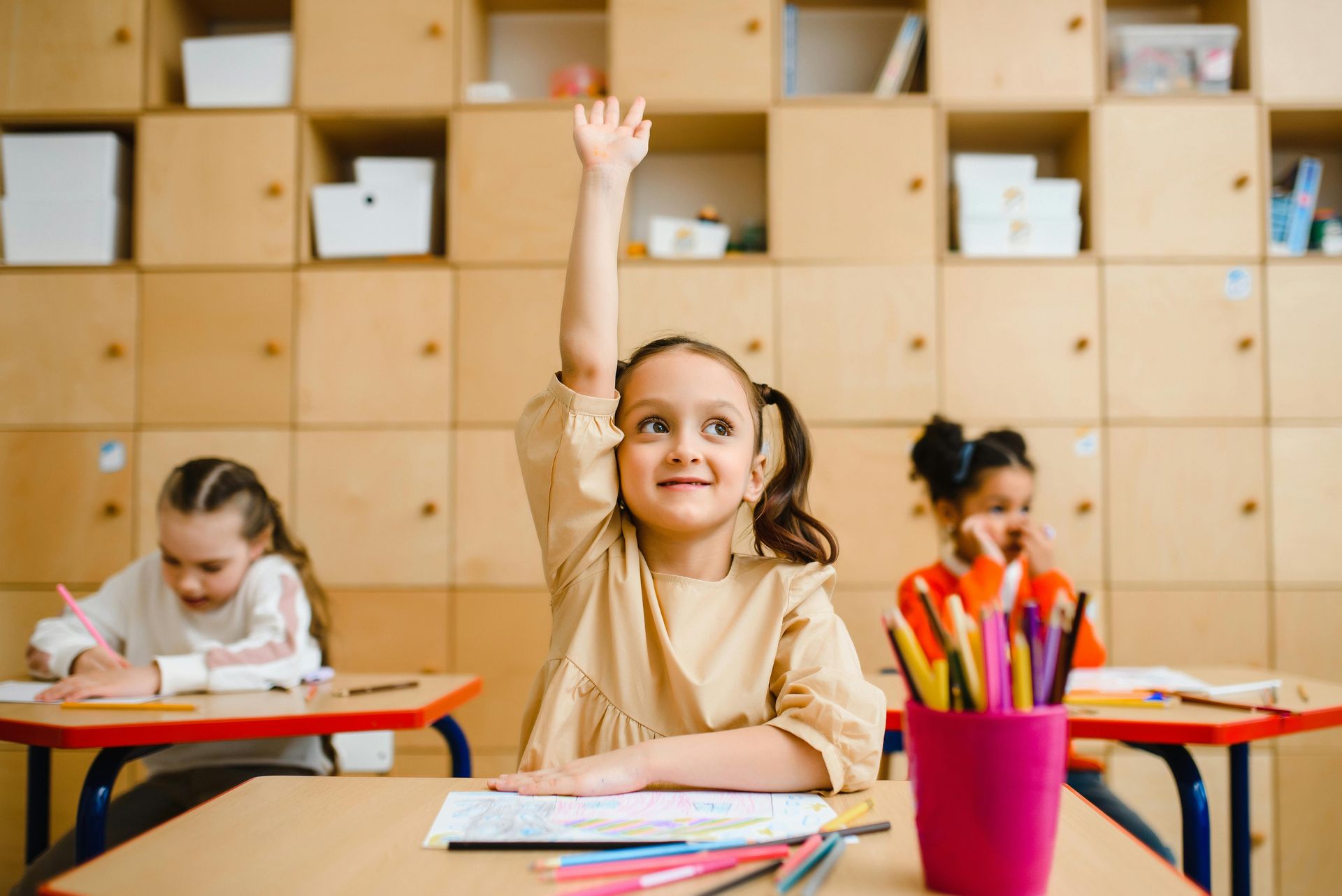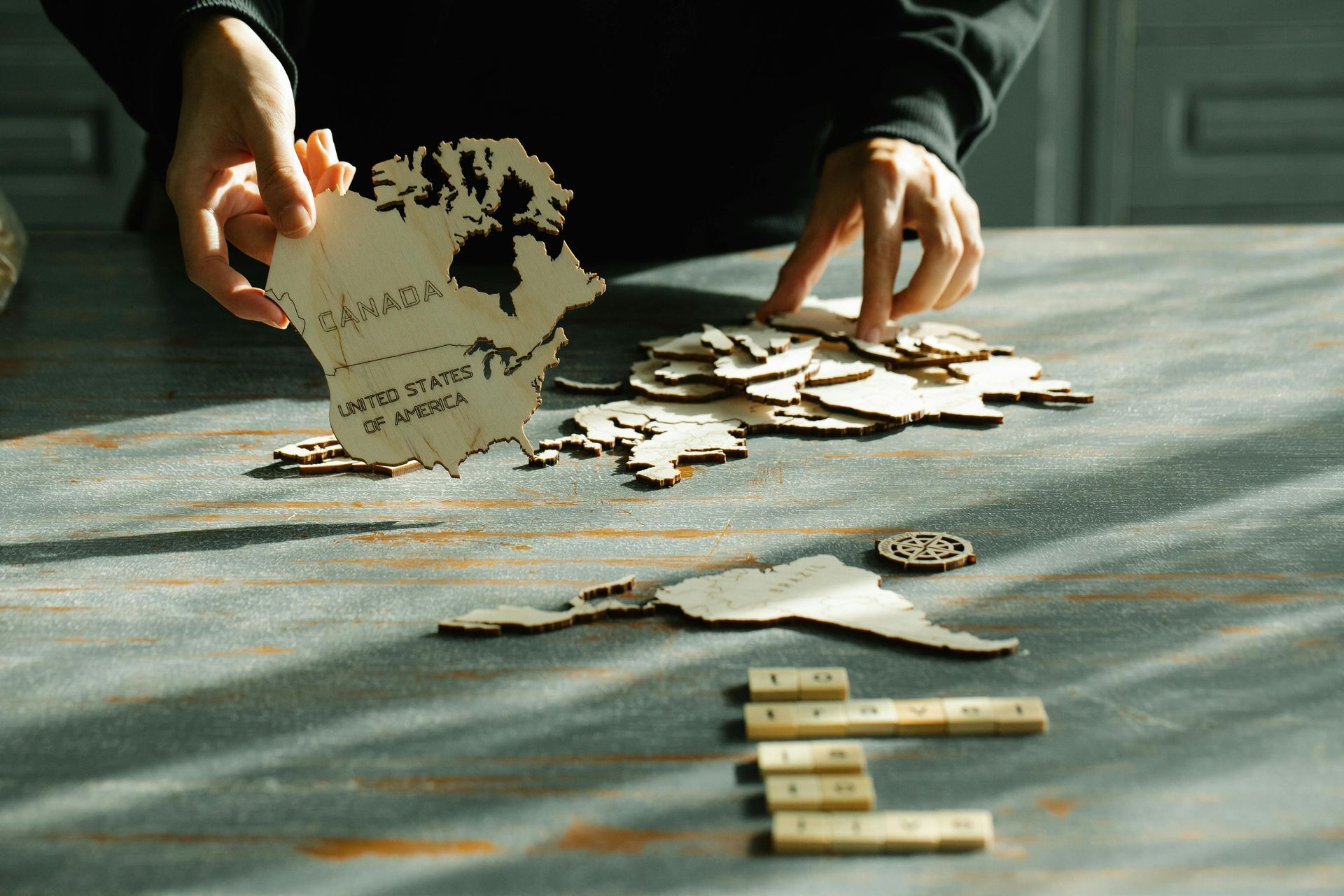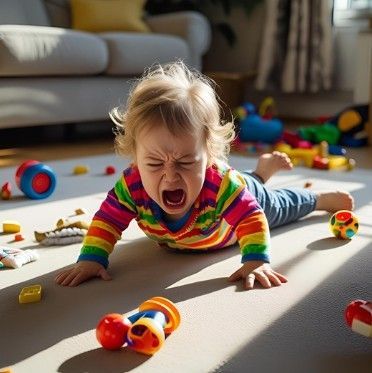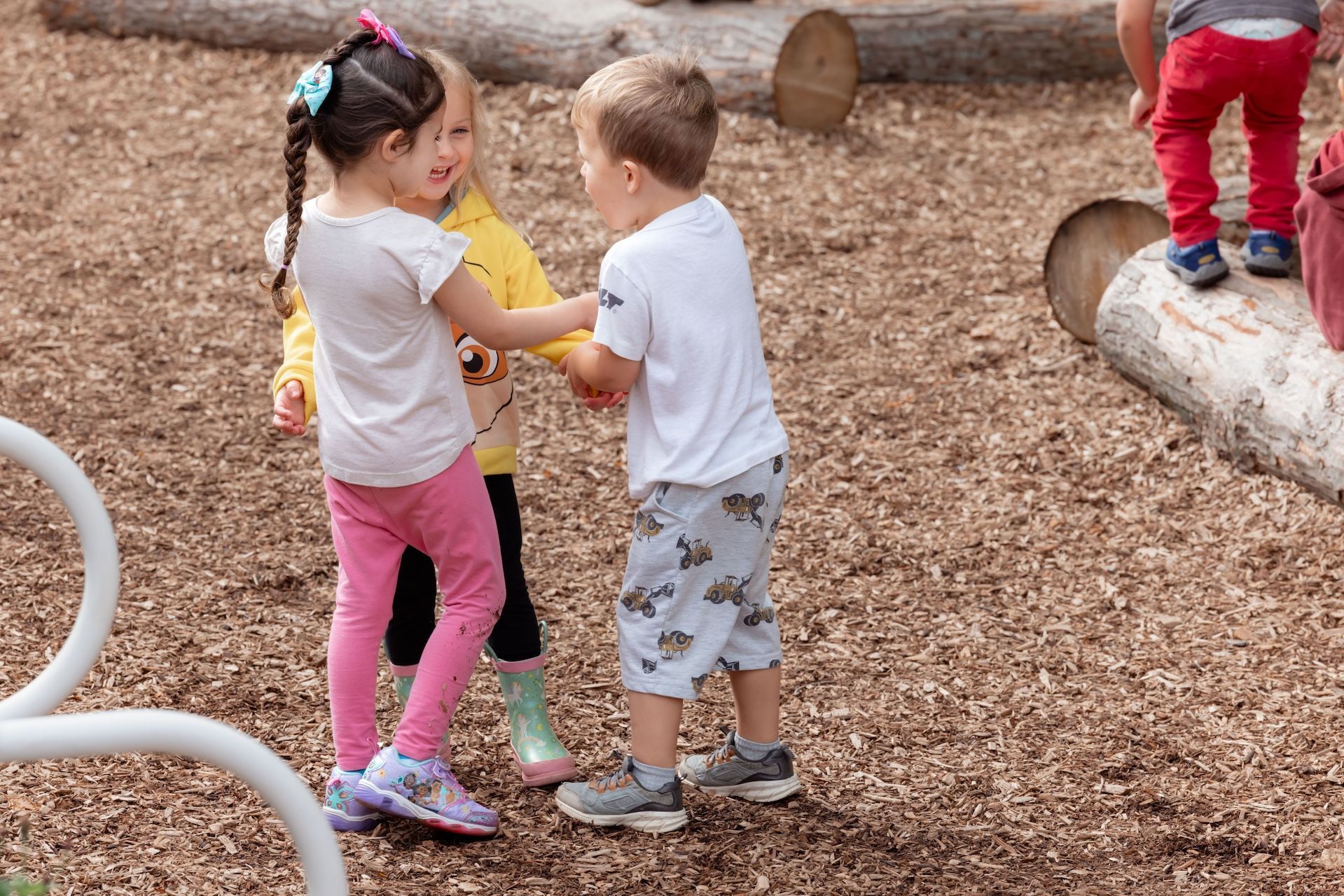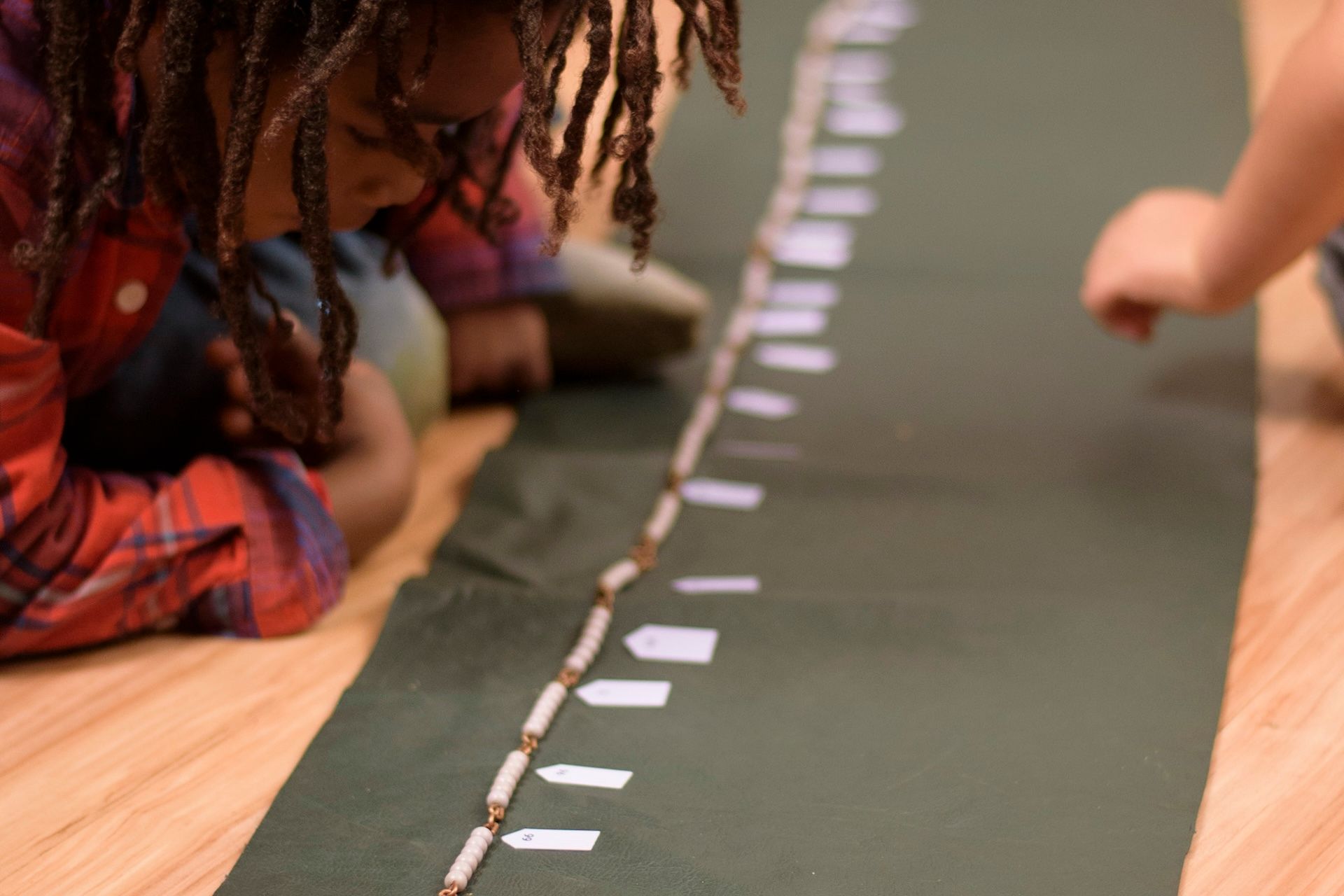The Quest for Joyful Learning: How Montessori Principles Lead to Gameschooling
The Quest for Joyful Learning: How Montessori Principles Lead to Gameschooling
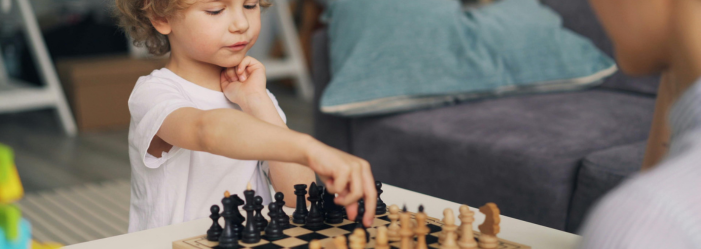
“Play is the work of the child.” — Maria Montessori
The sound of quiet concentration fills the room, the kind of silence that hums with purpose. Two children lean over a board, their eyes darting between knight and rook, between possibility and consequence. In the corner, another small group is laughing softly as they design the rules for a game of their own creation, arguing playfully over what counts as a “power-up.” A teacher moves among them, not directing, but observing, her posture curious, patient, and deeply respectful.
It’s a scene that could have unfolded in any Montessori classroom, yet it’s also something more. It’s the moment I realized that play, real, structured and meaningful play, wasn’t an extra. It was the engine of learning itself.
.
For years, I had watched children move through beautifully prepared Montessori environments . . . shelves of inviting materials, freedom to choose their work, and a sense of calm order. As students grew older, I noticed a shift.
The spark of joyful discovery that came so naturally to the younger children sometimes dimmed under the weight of “bigger kid” expectations.
Assignments became more defined, outcomes more predictable, curiosity gave way to compliance.
I couldn’t shake the feeling that we were losing something essential . . . not just engagement, but
aliveness for learning and discovering.
It wasn’t that children didn’t want to learn, they simply needed to feel the wonder again . . . And that’s when I began to notice something else. Whenever I brought in even the simplest form of game-based learning: a puzzle, a strategy challenge, a classroom quest that spark returned.
Children who had withdrawn reemerged as leaders, collaboration replaced competition, and mistakes became puzzles to solve instead of failures to hide.
That was the beginning of my deep dive into what we now call Gameschooling, a philosophy and practice that blends the best of Montessori’s century-old wisdom with the insights of modern cognitive science and game design.
Somewhere along the way, many traditional classrooms, and even many homeschools, lost sight of play. The joy of discovery gave way to schedules, benchmarks, and checklists. Learning became something to finish, not something to feel.
We can trace this shift through decades of well-intentioned reform:
- The rise of standardized testing
- The demand for accountability
- The push for measurable outcomes.
These efforts brought some clarity, but they also drained the humanity out of learning. Children became data points, teachers became technicians, parents became project managers of their child’s childhood.
What if education didn’t have to feel this way?
What if it could feel more like an epic quest, full of curiosity, collaboration, and meaningful challenge?
That’s the promise of Gameschooling, a framework that invites us to rediscover learning as a living, joyful act.
Gameschooling doesn’t ask us to throw away structure or rigor, iIt asks us to remember why those things exist in the first place . . . to support exploration, not stifle it.
And for those of us who come from Montessori roots, this isn’t a new idea at all. Montessori wrote, “Joy, feeling one’s own value, being appreciated and loved by others, feeling useful and capable of production, all these satisfy the inner needs of man.”
That joy is the throughline of learning and wonder, and gameschooling is simply the modern expression of the same truth: Children, and adults, learn best when they are fully engaged, deeply curious, and free to experiment within thoughtful boundaries.
This is where our story begins: in the overlap between Montessori philosophy and playful design, between the work of the child and the wonder of the game.
It’s an invitation to traditional and non-traditional educators, homeschoolers, and families alike to rediscover what learning was always meant to be.
How Montessori Led Me to Gameschooling
At Sandwich Montessori School, our classrooms are built around one core belief: children thrive when learning feels meaningful.
Every shelf, every lesson, every conversation is designed to help them make sense of their world, not just memorize it.
That belief has guided me for years, but it also led to a question I couldn’t shake: How do we preserve that same spark of joy and independence as children grow older?
I’ve watched countless preschoolers enter the classroom brimming with curiosity, eager to explore, to touch, to ask “why.” And then, somewhere between third and fifth grade, something changes.
They still love learning, but the structure of formal academics begins to tighten around them–even in a Montessori setting some structures are used in a way that replaces the freedom that once defined their learning. I knew we could do better, so I began to experiment without even knowing I was delving into the gameschooling concept.
The first time I brought Risk into my upper elementary classroom, it wasn’t part of a lesson plan, it was simply a Friday “choice time” experiment. A few of my students had discovered the game at home and begged to bring it in. I agreed, half out of curiosity and half out of caution. I expected a lighthearted diversion; instead, something transformative unfolded.
The moment the dice began to roll, the room shifted. Even my most reserved students came alive collaborating, negotiating, debating strategies, and explaining their reasoning to one another. What struck me most wasn’t the competition; it was the engagement. They were talking about geography, resources, and probability with more focus and energy than I had seen during any formal history lesson. In a single hour, I witnessed evidence of mathematical reasoning, emotional regulation, and critical thinking, not because I taught it, but because they discovered it.
Over the following weeks, I began to see the deeper learning that was taking place beneath the surface of the game. So, I started to modify Risk to fit the Montessori classroom. We renamed continents after historical eras, redesigned the board to reflect trade routes and migration patterns, and shifted the goal from domination to diplomacy . . . students could “win” through stable alliances and balanced peace instead of conquest. In this version, the world didn’t need one winner. The goal was to see if humanity could maintain peace and balance across all continents for ten turns. The transformation was profound. Children who once memorized dates began discussing motives. They debated what made civilizations rise or fall and reflected on how geography shapes human destiny.
That’s when it clicked: playing games and Gameschooling, itself, wasn’t a break from learning, it was learning! And as I watched my students make connections between abstract ideas and lived experience, I recognized something deeply familiar . . . It was Montessori, reborn through play.
Montessori in Motion
Montessori called it “freedom within limits.” With the philosophy and in her vision, education is not a system of control, but a structure of possibility within a framework that gives children just enough boundaries to act independently and meaningfully.
Gameschooling works exactly the same way. The rules of a game don’t restrict creativity; they channel it. They offer a scaffold, a clear, predictable system in which players can take risks, make decisions, and learn from the consequences. Every dice roll, every move, every turn is a miniature experiment in agency.
The beauty of Montessori education is that it gives children space to repeat, refine, and reflect, the same qualities that make a good game endlessly engaging. The child becomes the scientist, the storyteller, the strategist . . . all within an environment that honors process over product.
At Sandwich Montessori, we began to lean into that connection. If a math material could be reimagined as a quest, why not a literature circle? If collaboration could be built into gameplay, why not build it into every academic challenge? Soon, we found that Gameschooling wasn’t replacing Montessori, it was amplifying it.
Chess and Dungeons & Dragons: Freedom, Order, and Story
Chess came first . . . We introduced it as part of our “Strategic Thinking” path for upper elementary students. It was more than an enrichment activity, it was a living lesson in logic, foresight, and emotional balance.
We watched as students internalized principles we could never have taught with a worksheet:
- Observation: looking before leaping.
- Planning: thinking several steps ahead.
- Grace and courtesy: winning humbly, losing with dignity.
One afternoon, a student who had often struggled to manage frustration sat quietly after a match he’d lost. When asked what he was thinking, he said, “I realized I lost because I moved too fast, but that’s okay. I’ll win next time because now I know why.”
It was pure Montessori: self-correction, reflection, and intrinsic motivation.
Then came Dungeons & Dragons, our “Creative Storytelling” path.
If Chess sharpened logic, D&D awakened imagination.
Children took on the roles of heroes, healers, and adventurers, weaving moral decisions into narrative form. They practiced language arts through dialogue, empathy through character, and collaboration through campaign design.
Here, too, I saw Montessori principles at play:
- Prepared Environment: a space filled with structure and imagination.
- Control of Error: natural consequences woven into every decision.
- Cosmic Education: the understanding that we are all part of a larger human story.
Through these games, students weren’t escaping reality, they were understanding it more deeply.
Extending Gameschooling Beyond the Classroom
As we began to share the unique experiences we offer for elementary and middle school students at Sandwich Montessori, families became curious about how they could bring this kind of learning home.
Homeschool parents, especially, were eager to connect their children to experiences that combined social connection with intellectual challenge.
So we structured our day to allow homeschooling families to join us for one or more of our gameschooling experiences. Today, our Chess and
Dungeons & Dragons sessions, as well as a number of other highly engaging student learning workshops are open not only to enrolled Sandwich Montessori students, but also to homeschoolers across the region.
Some come for a single session, while others join for an entire season, watching their children form friendships that bridge home and school, all through the shared language of play.
This partnership has been transformative. Homeschoolers bring fresh perspectives, curiosity, and flexibility, and our in school Montessori students, accustomed to independent work and self-regulation, model grace, patience, and focus.
Together, they form a
true learning guild, a microcosm of what hybrid schooling can look like when the walls of traditional schooling fall away to concepts like gameschooling.
Rediscovering What Education Can Be
Looking back, I see now that Montessori and Gameschooling were never separate philosophies, they were two paths to the same destination. Both trust the child, value curiosity over compliance, and both honor learning as a living process rather than a performance.
When I watch our students play Chess or Dungeons & Dragons, I see a kind of harmony that’s rare in education: the rigor of structure balanced with the freedom of imagination. It’s not chaos; it’s choreography, the dance of meaningful learning. As a teacher, that’s the moment that still takes my breath away, because this isn’t just about games. It’s about reclaiming the essence of Montessori itself: learning that begins in joy and ends in wisdom.
What Is Gameschooling?
Gameschooling is not about gamifying education or adding points to make lessons more appealing.
It’s about rediscovering learning as play, the most natural, powerful, and enduring way humans learn.
At its heart, Gameschooling is the intentional use of games, whether strategy-based, story-driven, or creative, as vehicles for deep, self-directed learning. It blends the structure of games with the purpose of education, creating experiences that engage the mind, the body, and the emotions all at once.
When I first encountered the term, I thought it referred to homeschooling families who used board games to supplement curriculum, and for many, that’s exactly how it began. But as I observed and experimented, I realized it’s much more profound. Gameschooling isn’t a trend, it’s a framework for re-humanizing learning.
It’s what Montessori envisioned when she wrote that “play is the work of the child”, that children construct intelligence through movement, curiosity, and meaningful activity.
Gameschooling takes that principle and extends it beyond early childhood, offering adolescents and even adults the same invitation: to learn by doing, reflecting, and iterating.
The Ancient Connection Between Play and Learning
Play is as old as humanity. Long before classrooms, tests, or textbooks, humans learned through simulation. Children practiced hunting by pretending to stalk, practiced empathy by role-playing, and learned rules and ethics through the games of their culture.
Anthropologist Peter Gray calls this “education by play.” In his research, he shows that every known society, from ancient tribes to modern communities, has used games to teach survival, cooperation, and wisdom.
This isn’t frivolous; it’s neurological.
Play activates the brain’s dopamine system, which fuels curiosity, persistence, and intrinsic motivation. When learners are engaged in play, they experience a cycle of challenge, feedback, and mastery that mirrors the structure of effective learning environments (Deci & Ryan, 1985; Csikszentmihalyi, 1990). In essence, games are nature’s curriculum.
The Science Behind Gameschooling
Modern cognitive science confirms what Montessori and other progressive educators intuited over a century ago:
- Learning happens best when it is active, not passive.
- Retention increases when learners receive immediate feedback.
- Motivation thrives when learners experience autonomy, mastery, and purpose.
Each of these elements exists organically in a well-designed game. When a child plays chess, they plan, act, and reflect . . . a direct loop of cause and effect. When they join a Dungeons & Dragons campaign, they build worlds collaboratively, testing hypotheses about human behavior and ethical decision-making. When they design a board game at home, they are engaging in systems thinking, creative writing, and iterative design . . . all hallmarks of higher-order cognition.
Gameschooling takes these natural learning cycles and turns them into intentional practice. As Montessori guides, we already understand the power of “control of error”, the idea that the material, not the adult, teaches the lesson. In Gameschooling, the same principle applies: the game itself becomes the teacher and provides feedback, structure, and consequence without judgment, allowing learners to self-correct and grow.
The result? Deep concentration, joy, and what Csikszentmihalyi calls “flow”, tate of total engagement where learning becomes effortless and exhilarating.
Montessori and Gameschooling: A Shared Design
When we look closely, Gameschooling is Montessori education through a new lens. Both rely on carefully prepared environments that balance freedom with structure and honor the learner’s natural drive to explore and master. Both also recognize that real learning is not about memorization, but about transformation.
Let’s compare their core elements:
| Montessori Principle | Gameschooling Parallel |
|---|---|
| Prepared Environment | Game systems are structured worlds with clear rules and freedom within limits. |
| Control of Error | Feedback comes naturally through gameplay. Every turn is an opportunity to adjust. |
| Freedom Within Limits | Players choose their path within a defined framework, developing discipline through autonomy. |
| Intrinsic Motivation | Progress and mastery drive engagement, not external rewards. |
| Observation and Reflection | Players and educators reflect on strategy, collaboration, and outcomes to grow understanding. |
| Cosmic Education | Games connect individuals to broader systems — social, ethical, ecological, or imaginative. |
This alignment is no coincidence. Montessori herself designed her classrooms as living games of mastery. Every material has a built-in challenge, a rule set, and an end goal. Children learn by testing, failing, and succeeding, guided not by the teacher’s instruction, but by the logic of the environment. Gameschooling simply extends that model into modern forms of play: digital, tabletop, collaborative, or experiential. It meets children where they are, in a world that already values interactivity, simulation, and design, and channels those instincts toward growth.
At Sandwich Montessori School, we use Gameschooling across multiple settings. In our Chess Club, students develop foresight and patience, learning to manage frustration, analyze consequences, and approach complexity with calm curiosity. In Dungeons & Dragons, they build shared stories that reinforce literacy, empathy, and teamwork. We invite our traditional students and local homeschooling families to join the experiences.
Across all contexts, the outcome is the same:
- Children become more confident thinkers and kinder collaborators.
- They learn to take initiative, manage mistakes, and celebrate others’ success.
And for educators, the benefit is just as profound. Gameschooling turns the classroom into a living system, one that can adapt, grow, and regenerate joy. As one student once told me after a long D&D campaign:
“Sometimes you lose your dice roll, but if you stay in the story, you still win.”
That’s Gameschooling in its purest form, not victory or defeat, but resilience and discovery.
The Power of Play in Montessori and Beyond
“Joy, feeling one’s own value, being appreciated and loved by others, feeling useful and capable of production — all these satisfy the inner needs of man.”
—
Maria Montessori
If there is a single thread that runs through both Montessori education and Gameschooling, it is joy, not the fleeting joy of amusement, but the deep, grounded joy of discovery.
Montessori believed that education was not preparation for life; it was life. Her goal wasn’t to produce students who could perform tasks, but humans who could act with wisdom, curiosity, and peace, and she saw play, purposeful, self-directed play, as the mechanism that awakens that potential.
Play as the Pathway to Peace
To Montessori, play wasn’t the opposite of work, it was work, the most essential kind. When a child concentrates deeply on arranging bead chains or building a tower, they are not “playing around.” They are constructing their mind, their character, and their capacity for focus.
Gameschooling simply reintroduces this truth to an age group that’s often forgotten. In elementary and middle school, we tend to replace wonder with worksheets and textbooks, but in a Montessori environment, and in our Gameschooling approach at Sandwich Montessori, play continues to be the thread that connects intellect, emotion, and humanity.
When children play chess, they’re not just learning strategy; they’re practicing patience and integrity. When they embark on a Dungeons & Dragons quest, they’re not escaping reality they’re rehearsing how to cooperate, lead, and make moral decisions in complex situations.
This is education for peace, in Montessori’s sense of the term. It’s about preparing the child to live joyfully and justly in a complicated world.
The Science of Joyful Learning
Modern neuroscience now supports what Montessori observed in her classrooms a century ago. When learners engage in meaningful play, several things happen in the brain at once:
- Dopamine release enhances motivation and attention.
- Neural networks for executive function and problem-solving become more efficient.
- Oxytocin pathways strengthen empathy and connection.
- And most importantly, cortisol (stress hormone) decreases, allowing creativity and reasoning to flourish.
This isn’t accidental, it’s biological design. The human brain evolved to learn through play, through curiosity, experimentation, and feedback. That flow Csikszentmihalyi referred to when the balance of challenge and skill that makes time disappear.
Anyone who’s ever watched a child immersed in a Montessori work cycle or a collaborative game has seen flow firsthand. It’s the spark of joyful concentration, that moment when a child forgets to be afraid of failure because they are so deeply engaged in discovery, and when that spark becomes a habit, it changes everything. Children who experience flow regularly grow into adults who can self-regulate, persevere, and innovate. They don’t avoid difficulty; they approach it with curiosity.
The Montessori Gameboard: Structure That Liberates
One of the most profound connections between Montessori and Gameschooling lies in how both balance freedom and order. In Montessori classrooms, every material is designed with a “control of error.”
If a child miscounts the golden beads or misaligns the pink tower, they see and correct it on their own, no teacher intervention needed. In Gameschooling, the same mechanism exists. The rules of the game provide the feedback loop; the child learns naturally through consequence, not correction.
That’s why both systems nurture independence and confidence . . . When students learn through self-correction, they internalize responsibility. They become resilient, not because someone rewards them for trying again, but because they want to.
This kind of independence is what Montessori called the “normalization” of the child . . . the process through which inner order arises from purposeful activity. Play, then, is not just fun. It’s a path to wholeness.
The Role of the Adult: From Instructor to Co-Player
One of the hardest shifts for educators and parents is learning when to step back. Gameschooling, like Montessori, requires adults to trade authority for curiosity. When a teacher joins a Dungeons & Dragons campaign not as a “game master” but as a fellow storyteller, something powerful happens, and the hierarchy dissolves. The classroom becomes a true community.
Children see adults as partners in inquiry, their guides who are still learning, still experimenting, still playing. That redefines the teacher’s role: not as the keeper of knowledge, but as the
architect of experience. The teacher prepares the gameboard, sets the tone, and observes the players. They must know when to intervene and when to let natural learning unfold. This, too, is deeply Montessorithe, delicate art of “teaching by not teaching.” In this model, it’s not just the children who grow, adults rediscover their own sense of play . . . a quality that makes their teaching more authentic, their classrooms more alive, and their connection with students more human.
How Gameschooling Serves Montessori Learners and Homeschoolers Alike
Montessori classrooms and homeschool environments share something sacred: both honor the child as an active participant in their own learning. Both reject the idea that education must be rigid, standardized, or confined to four walls. Instead, they ask the same fundamental question:
What happens when we trust curiosity to lead the way?
Gameschooling provides a bridge between these two worlds, uniting Montessori structure with the flexibility of home education and it gives children a common language for learning: play.
The Shared Values of Montessori and Homeschool Families
At first glance, Montessori classrooms and homeschool environments may seem different. One takes place in a carefully prepared community; the other unfolds in the intimacy of home, but their philosophies overlap beautifully.
Both are rooted in:
- Freedom within limits: children make choices within a structure that supports independence.
- Intrinsic motivation: learning is driven by curiosity, not external rewards.
- Multi-age learning: younger children learn from older ones and vice versa.
- Respect for individuality: every child learns at their own pace, guided by observation rather than comparison.
Gameschooling naturally complements these principles when a child joins a cooperative board game, a storytelling campaign, or a strategic match, they’re participating in a microcosm of life . . . one where every individual matters, and collaboration shapes the outcome, and the gameboard becomes the bridge.
The Future of Gameschooling . . . Building a Movement for Joyful Learning
“The child is both a hope and a promise for mankind.”
—
Maria Montessori
Every generation inherits a choice:
Do we prepare children for the world as it is, or for the world they will create?
In the 21st century, this question has never been more urgent.
Automation and artificial intelligence are transforming what it means to work, create, and communicate, and amid that transformation, one truth remains constant: humans learn best through curiosity, collaboration, and play. That is why Gameschooling, especially when grounded in Montessori philosophy, is not just a model for education, it’s a model for humanity.
A Call to Educators and Parents
Gameschooling is not a product to buy or a curriculum to follow, it’s a culture to build. It begins wherever curiosity lives: around a kitchen table, in a classroom corner, or in a library meeting room. If you’re an educator, start small and transform one unit into a quest. Add XP for teamwork or persistence. Replace a worksheet with a story-driven challenge.
If you’re a parent or homeschooler, bring Gameschooling home. Play a cooperative board game and turn the reflection into a journal entry. Invite your child to design their own game about a topic they love. Join local sessions or partner with a Montessori school that shares your philosophy.
If you’re part of a community organization, open your doors. Host intergenerational “Game Nights for Learning.” Create a shared library of educational games.
Let play become the heartbeat of lifelong learning.
The goal isn’t to mimic someone else’s version of Gameschooling, it’s to make it your own, rooted in your values and your learners’ needs.
Play Beyond Childhood
As Montessori often reminded us, “The child who has felt a strong love for his surroundings . . .gives us reason to hope that humanity can develop in a new direction.”
The habits of mind developed through play, empathy, curiosity, collaboration, don’t end with childhood. They are the very traits our world needs most. When education becomes playful again, learning stops being a checklist and becomes a culture.
At Sandwich Montessori, we see this every day when a homeschool child joins a Chess session and stays long after the match to discuss strategy, or when an entire D&D team debriefs not just the adventure, but what they learned about teamwork and leadership.
Play builds thinkers who can balance logic with compassion and it builds leaders who can navigate uncertainty with creativity. Perhaps most importantly, it builds adults who still believe in wonder, because the truth is: education’s greatest endgame isn’t mastery, it’s meaning, it's not about winning. It’s about becoming.
Learn More
Visit us at sandwichmontessori.org
Learn about our homeschool hybrid program
Check out our D&D enrichment program
Bibliography
Montessori Sources
- Montessori, Maria. The Absorbent Mind. New York: Henry Holt and Company, 1995.
- Montessori, Maria. The Secret of Childhood. New York: Ballantine Books, 1995.
- Montessori, Maria. To Educate the Human Potential. Madras: Kalakshetra Publications, 1948.
- Montessori, Maria. The Montessori Method. New York: Schocken Books, 1964.
- Standing, E.M.
Maria Montessori: Her Life and Work. New York: Penguin Books, 1998.
Gameschooling and Educational Psychology
- Csikszentmihalyi, Mihaly. Flow: The Psychology of Optimal Experience. New York: Harper & Row, 1990.
- Deci, Edward L., and Richard M. Ryan. Intrinsic Motivation and Self-Determination in Human Behavior. New York: Plenum Press, 1985.
- Gee, James Paul. What Video Games Have to Teach Us About Learning and Literacy. New York: Palgrave Macmillan, 2007.
- Papert, Seymour. Mindstorms: Children, Computers, and Powerful Ideas. New York: Basic Books, 1980.
- Bransford, John D., Ann L. Brown, and Rodney R. Cocking, eds. How People Learn: Brain, Mind, Experience, and School. Washington, DC: National Academies Press, 2000.
- Dewey, John.
Experience and Education. New York: Macmillan, 1938.
Contemporary Educational Research
- Hattie, John. Visible Learning: A Synthesis of Over 800 Meta-Analyses Relating to Achievement. New York: Routledge, 2012.
- Immordino-Yang, Mary Helen. Emotions, Learning, and the Brain: Exploring the Educational Implications of Affective Neuroscience. New York: W.W. Norton, 2015.
- Duckworth, Angela. Grit: The Power of Passion and Perseverance. New York: Scribner, 2016.
- Robinson, Sir Ken. Creative Schools: The Grassroots Revolution That’s Transforming Education. New York: Viking, 2015.
Gray, Peter. Free to Learn: Why Unleashing the Instinct to Play Will Make Our Children Happier, More Self-Reliant, and Better Students for Life. New York: Basic Books, 2013.

